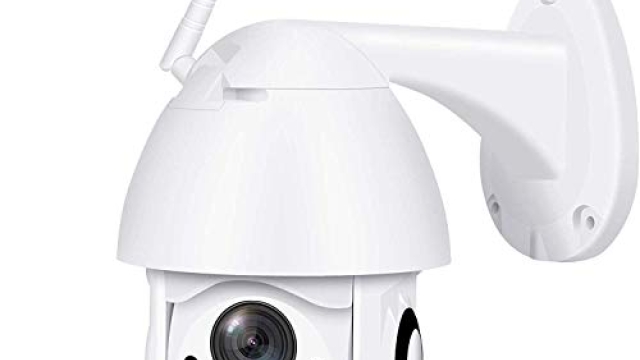
In our fast-paced world, home appliances have become essential companions, making our daily lives more convenient and efficient. However, when these devices break down, they can turn our routines upside down, leaving us frustrated and overwhelmed. But fear not, for mastering the art of appliance repair is within your reach. Whether it’s a washer that refuses to spin, a dryer that leaves clothes damp, a refrigerator that no longer cools, a dishwasher that won’t drain, an oven that doesn’t heat, or a garbage disposal that has stopped working, understanding how to troubleshoot and repair these appliances can save you time, money, and stress.
Learning the basics of appliance repair can empower you as a homeowner. Not only does it provide the satisfaction of fixing something with your own hands, but it also allows you to extend the lifespan of your appliances and keep your home running smoothly. In the following sections, we will explore practical tips and common solutions for repairing washers, dryers, refrigerators, dishwashers, ovens, and garbage disposals. Get ready to become a home hero and tackle those repair challenges with confidence.
Washer Repair Essentials
When your washer breaks down, the first step is to identify the issue. Common problems include leaks, failure to spin, or strange noises. Checking for loose hoses and ensuring the machine is level can often resolve simple issues. It’s also important to inspect the door latch and switch, as faulty components here can prevent the washer from starting.
If the machine is unresponsive, you may need to examine the power supply. Ensure the outlet is functioning and that the circuit breaker hasn’t tripped. Sometimes the issue lies within the washer itself, such as a worn belt or a malfunctioning motor. In these cases, consulting the user manual can provide guidance on troubleshooting or determining if replacement parts are needed.
For more complex issues, it may be worthwhile to consider disassembling certain components, such as the agitator or pump, to look for blockages or damage. Familiarizing yourself with the washer’s components can save you time and money. Remember to always disconnect the power before attempting any repairs to ensure safety.
Dryer Troubleshooting Techniques
When your dryer fails to start, the first step is to check the power supply. Ensure that it is plugged in and that the circuit breaker is not tripped. Sometimes, a faulty outlet may also be the culprit, so try plugging another device into the outlet to confirm it is working. If the dryer has a door switch, make sure that it is functioning properly, as many dryers have safety features that prevent operation when the door is not securely closed.
If the dryer starts but is not heating, this can often be attributed to a broken heating element or an issue with the thermostat. A visual inspection of the heating element can reveal signs of damage, and using a multimeter can help test its functionality. Additionally, check the lint filter and exhaust vent for any blockages that could impede airflow, as proper ventilation is essential for effective operation. Cleaning these components regularly ensures better performance and extends the life of your dryer.
Lastly, if you notice the dryer is operating but is taking longer than usual to dry clothes, it might be time to investigate the moisture sensor. This sensor detects humidity levels in the drum and may need cleaning if it is caked with lint or residue. Additionally, ensure that the load size is appropriate; overloading the dryer can lead to inefficient drying. By addressing these common issues, you will keep your dryer functioning efficiently and avoid unnecessary repairs.
Refrigerator Maintenance Tips
Best appliance repair service in Miami
Keeping your refrigerator in optimal condition is essential for ensuring that your food stays fresher for longer. One of the simplest maintenance tasks is to regularly clean the condenser coils. Dust and debris can accumulate on these coils, making your fridge work harder and consume more energy. Use a vacuum cleaner or a coil brush to gently remove any buildup at least twice a year, which will help maintain the efficiency of your appliance.
Another important aspect of refrigerator maintenance is checking the door seals. Over time, seals can wear out or become damaged, leading to cold air leaking and increased energy costs. To test the seals, close the refrigerator door on a piece of paper; if you can easily pull the paper out, the seals may need to be replaced. Ensuring that the seals are in good condition will help maintain the internal temperature and keep your energy bills down.
Additionally, maintaining the proper temperature settings is crucial for your refrigerator’s performance. The ideal temperature for a refrigerator is between 35 and 38 degrees Fahrenheit, while the freezer should be set at 0 degrees Fahrenheit. Use a thermometer to check the internal temperatures and make adjustments as necessary. Keeping the temperature within these ranges will not only keep your food fresh but also extend the lifespan of your appliance.
Dishwasher Common Issues
Dishwashers are invaluable appliances, but they can encounter various problems that affect their performance. One common issue is poor cleaning. If dishes come out dirty or still have food residue, it may be due to clogged spray arms or a malfunctioning filter. Ensuring that these components are clean and free of obstructions can significantly improve cleaning efficiency.
Another frequent problem is leaking water. A dishwasher may leak due to damaged door seals, loose hoses, or even a malfunctioning float switch. Identifying the source of the leak is crucial to prevent water damage to your kitchen and ensure the appliance operates efficiently. Regular inspections and maintenance can help catch these issues early.
Lastly, strange noises during cycles can indicate issues with the dishwasher. Common sounds include grinding, rattling, or buzzing, which often point to loose items, worn-out bearings, or a failing motor. If your dishwasher is making unexpected noises, it’s important to investigate further to determine the cause, as ignoring it could lead to more significant repairs down the line.
Oven and Disposal Fixes
When it comes to oven repairs, the most common issues often involve heating problems. A typical malfunction might be that the oven does not heat up at all. Before calling a professional, check the power source to ensure it is plugged in and that the circuit breaker hasn’t tripped. If the oven is gas-powered, make sure the gas supply is on. If none of these are the issues, you may need to inspect the heating element or thermostat, as these components can wear out over time and may require replacement.
Dishwashers often have problems with garbage disposals, especially when there’s a clog in the system. If your dishwasher is draining poorly, it might be because of debris stuck in the disposal. Start by turning off the power to the disposal and checking for clogs. Use a plunger or a specialized waste disposal tool to clear any obstructions. Remember to regularly clean the disposal to prevent food buildup, which can contribute to recurring clogs and drainage issues.
Another common oven problem involves faulty timers or knobs, making it difficult to control cooking temperatures. If your oven shuts off unexpectedly or does not maintain its set temperature, the problem could lie in the control board or the temperature sensor. Always begin by resetting the appliance or consulting the user manual for troubleshooting steps. If issues persist, checking the specific electrical components or seeking professional repair may be the best course of action. Regular maintenance on both your oven and garbage disposal requires cleaning and inspection, ensuring they function effectively for years to come.


